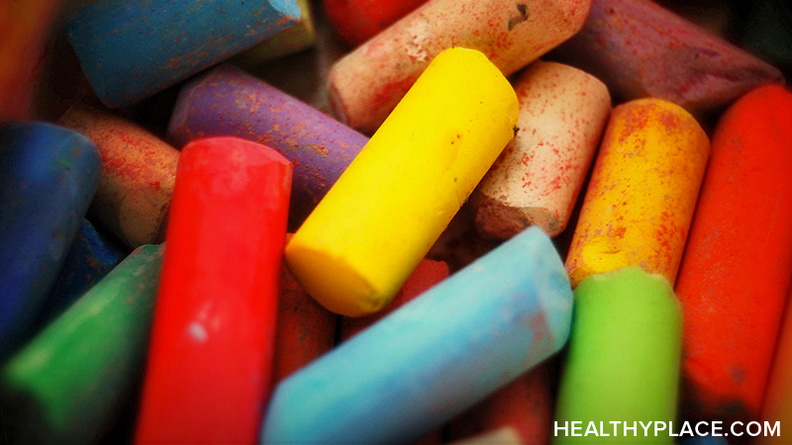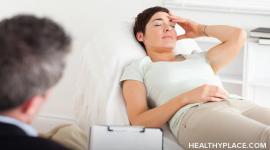Color Therapy for Psychiatric Disorders

Before engaging in any complementary medical technique, you should be aware that many of these techniques have not been evaluated in scientific studies. Often, only limited information is available about their safety and effectiveness.
Each state and each discipline has its own rules about whether practitioners are required to be professionally licensed. If you plan to visit a practitioner, it is recommended that you choose one who is licensed by a recognized national organization and who abides by the organization's standards. It is always best to speak with your primary healthcare provider before starting any new therapeutic technique.
Background And Theory
Color therapy uses colors for their proposed healing abilities in treating emotional and physical disturbances. Changing the colors of clothes or home or office décor or visualizing different colors may be recommended. Color therapy is based on the premise that different colors evoke different responses in people. For example, some colors are considered to be stimulating, whereas others may be soothing. Some color therapists assert that they can read and alter the colors of people's auras. In traditional Ayurvedic medicine, different colors are associated with different chakras, or energy centers.
Color, light or phototherapy using single or mixed colors, sometimes from a laser, may be shined on the whole body or on particular chakras. The Luscher Color Test is said to indicate mood and personality. Silks colored with natural dyes, meditation and breathing exercises may be used. Solarized water, color cards or a light box or lamp with colored filters is sometimes included as a part of treatment. Ocular Light Therapy, in which light is projected through colored filters into the eyes, is sometimes used in people with psychological disorders. Colored light therapy, Colorpuncture and Chromopressure are emerging techniques.
Scientific evidence is lacking for color therapy. Color therapy is different from conventional ultraviolet light phototherapy, which is used to treat high bilirubin blood levels in infants and skin disorders such as acne or psoriasis. Light therapy is used to treat seasonal affective disorder.
Evidence
Scientists have studied color therapy for the following health problems:
Musculoskeletal pain
There is preliminary research suggesting that color therapy may be helpful in the relief of hand, elbow, or lower back pain. Further study is needed before a clear conclusion can be drawn.
Unproven Uses
Color therapy has been suggested for many uses, based on tradition or on scientific theories. However, these uses have not been thoroughly studied in humans, and there is limited scientific evidence about safety or effectiveness. Some of these suggested uses are for conditions that are potentially life-threatening. Consult with a health care provider before using color therapy for any use.
| Aggressive or hostile behavior Asthma Attention-deficit hyperactivity disorder Bronchitis Dyslexia and other reading disabilities Enhanced athletic performance Enzyme stimulation Epilepsy High or low blood pressure Improved academic performance and IQ Increased strength Insomnia |
Learning disabilities Lethargy Lung cancer Migraine Muscle relaxation Prison reform Seasonal affective disorder Sedation Stress Tension Uterine fibroids Vision disorders |
Potential Dangers
Color therapy appears to be well tolerated in most individuals, although safety has not been thoroughly tested in scientific studies. Exposure to bright light can cause eye injury. Strobe lights may cause seizures in susceptible individuals.
Summary
Color therapy has been suggested for many conditions, but safety and effectiveness have not been thoroughly studied scientifically. Speak with your health care provider if you are considering color therapy.
The information in this monograph was prepared by the professional staff at Natural Standard, based on a thorough systematic review of scientific evidence. The material was reviewed by the Faculty of the Harvard Medical School with final editing approved by Natural Standard.
Resources
- Natural Standard: An organization that produces scientifically based reviews of complementary and alternative medicine (CAM) topics
- National Center for Complementary and Alternative Medicine (NCCAM): A division of the U.S. Department of Health & Human Services dedicated to research
Selected Scientific Studies: Color Therapy
Natural Standard reviewed more than 40 articles to prepare the professional monograph from which this version was created.
Some of the more recent studies are listed below:
- Anderson J. The effect of colour on the severity of migraine symptoms. Brain/Mind Bull 1990;4(15):1.
- Barber CF. The use of music and colour theory as a behaviour modifier. Br J Nurs 1999;8(7):443-448.
- Cocilovo A. Colored light therapy: overview of its history, theory, recent developments and clinical applications combined with acupuncture. Am J Acupunct 1999;27(1-2):71-83.
- Deppe A. Ocular light therapy: a case study. Aust J Holist Nurs 2000;7(1):41.
- Evans BJ, Patel R, Wilkins AJ, et al. A review of the management of 323 consecutive patients seen in a specific learning difficulties clinic. Ophthalmic Physiol Opt 1999;19(6):454-466.
- Geldschlager S. Osteopathic versus orthopedic treatments for chronic epicondylopathia humeri radialis: a randomized controlled trial. Forsch Komplementarmed Klass Naturheilkd 2004;Apr, 11(2):93-97.
- Maher CG. Effective physical treatment of chronic low back pain. Orthop Clin North Am 2004;Jan, 35(1):57-64.
- Ohara M, Kawashima Y, Kitajima s, et al. Inhibition Of lung metastasis of B16 melanoma cells exposed to blue light in mice. Int J Molecular Medicine 2002;10(6):701-705.
- Schauss AG. Tranquilizing effect of colour reduces aggressive behaviour and potential violence. J Orthomol Psych 1979;4(8):218-221.
- Schauss AG. The physiological effect of colour on the suppression of human aggression, research on Baker-Miller Pink. Int J Biosoc Res 1985;2(7):55-64.
- Wileman SM, Eagles JM, Andrew JE, et al. Light therapy for seasonal affective disorder in primary care: randomised controlled trial. Br J Psych 2001;178:311-316.
- Wohlfarth H. The effects of colour psychodynamic environmental modification on disciplinary incidences in elementary schools over one school year. Int J Biosocial Res 1984;1(6):44-53.
- Wohlfarth H. The effects of colour psychodynamic environmental modification on absences due to illness in elementary schools: a controlled study. Int J Biosocial Res 1984;1(6):54-61.
- Wohlfarth H. The effects of colour psychodynamic environmental colour and lighting modification of elementary schools on blood pressure and mood: a controlled study. Int J Biosocial Res 1985;1(7):9-16.
- Wohlfarth H, Schultz A. The effect of colour psychodynamic environment modification on sound levels in elementary schools. Int J Biosocial Res 2002;(5):12-19.
back to: Alternative Medicine Home ~ Alternative Medicine Treatments
APA Reference
Staff, H.
(2008, October 9). Color Therapy for Psychiatric Disorders, HealthyPlace. Retrieved
on 2025, November 28 from https://www.healthyplace.com/alternative-mental-health/treatments/color-therapy-for-psychiatric-disorders


